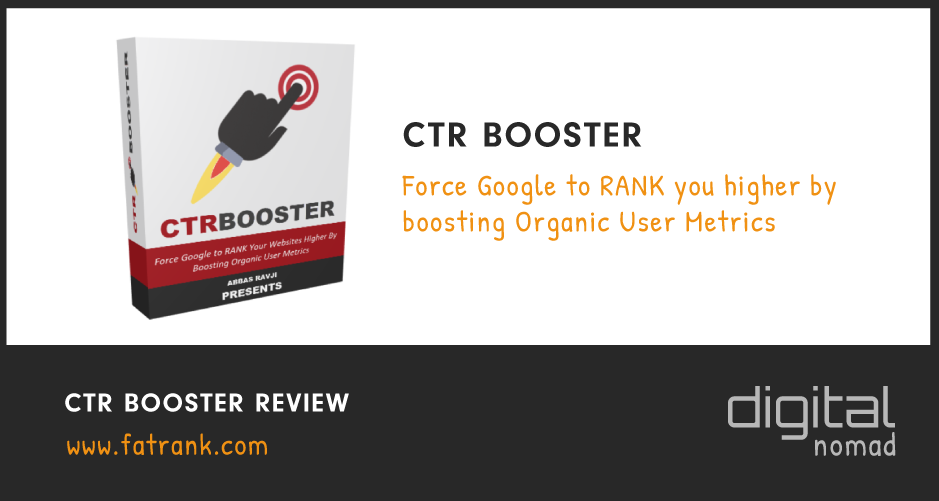Transform Your SEO Game with LinkDaddy CTR Manipulation Knowledge
Wiki Article
Attaining Success With Targeted CTR Adjustment
The optimization of click-through rates (CTR) is a critical undertaking for brands aiming to enhance their electronic visibility and take full advantage of involvement. Targeted CTR adjustment incorporates a range of strategies, from data-driven ad placements to the growth of compelling content tailored to particular audiences.Understanding Click-Through Fees
Click-through prices (CTR) function as a vital metric in electronic advertising and marketing, showing the effectiveness of on the internet web content in driving individual engagement. This metric is computed by separating the variety of clicks an ad or web link obtains by the total number of perceptions, expressed as a percent (CTR Manipulation). A greater CTR shows that the content resonates well with the target audience, prompting them to actComprehending CTR is necessary for marketers aiming to maximize their projects. Different aspects influence CTR, including advertisement placement, design, and the relevance of the material to the audience's rate of interests. Engaging headings and visually attractive photos can considerably improve the possibility of customers clicking on a web link.
Furthermore, the context in which the material is offered plays a critical duty in establishing CTR. Ultimately, a thorough understanding of CTR empowers online marketers to refine their strategies, making sure that digital campaigns attain their wanted results properly.
Importance of CTR Control
In the affordable landscape of digital advertising, the manipulation of click-through rates (CTR) has actually become an important strategy for improving campaign efficiency. CTR works as a vital performance indication, mirroring the efficiency of on the internet advertisements and material in drawing in customer engagement. A greater CTR not only signifies greater rate of interest but also can bring about improved search engine rankings and lower cost-per-click (CPC) prices, thus optimizing overall advertising and marketing budgets.The significance of CTR control hinges on its capability to educate marketing professionals regarding consumer preferences and habits. By assessing CTR data, companies can determine which elements of their projects resonate most with their target market. This insight enables even more educated decision-making and the allotment of sources to the most efficient networks.
In addition, efficient CTR adjustment promotes a competitive advantage. Brand names that constantly accomplish greater CTRs can outshine rivals, safeguarding a more substantial market presence. In an era where consumer interest is short lived, capturing clicks translates straight to raised conversions and leads, ultimately driving business development. Thus, grasping CTR control is not merely helpful; it is vital for accomplishing sustained success in electronic advertising campaigns.
Techniques for Targeted CTR
Attaining targeted click-through rates (CTR) requires a critical technique that includes numerous strategies customized to particular target market sections. One effective technique is enhancing ad positionings by making use of data analytics to identify high-performing channels. By concentrating efforts on these networks, marketing professionals can boost exposure and rise interaction.One more important technique is crafting engaging headings and phones call to action (CTAs) A/B screening various variations can disclose which combinations reverberate most with the target audience, thus driving higher CTR. you could look here In addition, including aesthetic elements such as distinctive images or video clips can substantially improve appeal, making web content more shareable and interesting.
Personalization likewise plays an essential duty; making use of individual information to produce tailored web content can foster a feeling of relevance, encouraging clicks. Moreover, leveraging social evidence through reviews and user-generated material can develop depend on, ultimately boosting CTR.
Studying Individual Actions
 Comprehending customer behavior is essential for optimizing marketing strategies and boosting total performance. By evaluating how individuals interact with content, marketing professionals can gain valuable understandings right into preferences, inspirations, and pain points. This expertise makes it possible for the growth of more targeted campaigns that reverberate with details audience segments.
Comprehending customer behavior is essential for optimizing marketing strategies and boosting total performance. By evaluating how individuals interact with content, marketing professionals can gain valuable understandings right into preferences, inspirations, and pain points. This expertise makes it possible for the growth of more targeted campaigns that reverberate with details audience segments.To successfully examine user actions, various devices and methodologies can be used. Internet analytics systems give information on customer interaction metrics such as click-through prices, bounce rates, and time invested on page. Heatmaps and session recordings permit marketing experts to imagine customer communications, revealing which aspects stand out and which might be neglected.
Additionally, user comments through studies and feedback kinds can use qualitative understandings, enhancing the understanding of user view and complete satisfaction. Segmenting individuals based upon actions, demographics, and passions can better refine targeting initiatives, customizing content to fulfill varied demands.
Inevitably, constant evaluation of individual habits is critical for adapting advertising strategies in real-time. As customer fads evolve, staying attuned to these adjustments guarantees that campaigns remain pertinent and reliable, promoting a much deeper connection with the target audience. This fundamental understanding establishes the stage for the successful implementation of targeted CTR control techniques.
Gauging Success and Adjusting Techniques
Measuring success in targeted advertising and marketing campaigns requires a tactical approach that incorporates efficiency metrics with ongoing analysis. Trick performance indicators (KPIs) such as click-through prices (CTR), conversion prices, and client acquisition costs should be kept track of continually to assess the performance of control approaches. By developing a baseline, online marketers can evaluate changes in CTR and recognize patterns that indicate effective interaction or prospective drawbacks.Routinely assessing these metrics permits the prompt adjustment of approaches. If a particular campaign reveals a considerable decrease in CTR, it may signify the requirement for creative modifications or a company website reevaluation of targeting parameters. Using A/B testing can even more refine techniques by contrasting variants of ads or landing pages, supplying understanding right into what reverberates best with the target audience.
Furthermore, integrating qualitative responses via studies or user meetings can supplement measurable data, using a thorough view of audience perception. Ultimately, the capability to iteratively evaluate and improve techniques based upon real-time data fosters an extra receptive marketing approach, ensuring that campaigns continue to be straightened with business objectives and audience preferences. This content flexible technique is critical in achieving sustained success in targeted CTR control.
Verdict
In final thought, targeted CTR control is essential for enhancing electronic marketing initiatives - GMB CTR Manipulation. Inevitably, effective CTR control not only boosts visibility however likewise fosters depend on and reputation, thus contributing to sustained growth in affordable markets.
 Targeted CTR control encompasses a range of strategies, from data-driven advertisement positionings to the advancement of compelling content customized to particular target markets.Click-through rates (CTR) serve as a critical statistics in digital advertising and marketing, showing the effectiveness of on the internet material in driving customer involvement. A higher CTR suggests that the content resonates well with the target audience, prompting them to take action.
Targeted CTR control encompasses a range of strategies, from data-driven advertisement positionings to the advancement of compelling content customized to particular target markets.Click-through rates (CTR) serve as a critical statistics in digital advertising and marketing, showing the effectiveness of on the internet material in driving customer involvement. A higher CTR suggests that the content resonates well with the target audience, prompting them to take action.CTR offers as a crucial performance indication, showing the effectiveness of on-line advertisements and web content in drawing in user interaction.In conclusion, targeted CTR adjustment is necessary for optimizing electronic marketing initiatives.
Report this wiki page